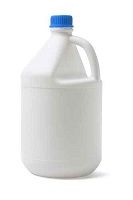Alternative to Bleach Baths in Atopic Dermatitis
Topical corticosteroid worked as well as bleach in transforming the microbiota of affected skin to that of healthy skin, an NYU study found.

Topical corticosteroid (TCS) was found as effective when used alone as in combination with bleach baths for improving symptoms of atopic dermatitis (AD) and in transforming the microbiota composition of lesional skin to resemble that of unaffected areas.
The investigators indicate that this study, which is consistent with culture-based studies that have found baseline differences between the microbiota of AD lesions and of unaffected areas, is the first to use molecular techniques to characterize the cutaneous microbiota of infants and young children with (AD) and on well controls,.
The study was published by lead author Mercedes Gonzalez, M.D. and colleagues, New York University Langone Medical Center in the September issue of the Journal of the American Academy of Dermatology.
"Dilute sodium hypocholorite (bleach) baths have been recommended to patients with AD by dermatologists for decades," Gonzales and colleagues observed, with few studies rigorously examining its usefulness. "Our study adds to the evidence that decreasing inflammation and improving barrier function may suffice to reduce staphyloccocu aureus and normalize AD bacterial compositions."
The randomized, placebo-controlled, single-blinded clinical trial involved 21 children with AD and 14 healthy children, of between 3 months and 5 years of age. The 4-week treatments consisted of daily applications of fluticasone propionate cream with or without twice weekly bleach baths.
DNA
High-throughput sequencing and quantitative polymerase chain reaction (qPCR) was used to characterize the cutaneous microbiota. At baseline, lesional skin had both a higher total bacterial concentration and higher concentration of staphyloccus species than the nonlesional sites. The total bacterial concentrations were similar on nonlesional skin and well controls, although the microbiota compositions were different.
EASI
EASI
Higher concentrations of total bacteria and of staphylococcus aureus were moderately correlated with greater severity of AD, reflected in higher scores on the Eczema Area and Severity Index (). Patients without detectable staphylococcus aureus tended to have lower total scores.
The two treatment regimens were comparable in improving the severity of AD symptoms, and the bacterial communities of affected areas after both treatments resembled that of nonlesional skin.
While it remains to be determined whether altered microbial composition has a pathogenic role in AD or is secondary to the immune abnormalities or inflammatory conditions associated with the condition, the investigators reported that antibacterial bleach baths provided no advantage over TCS alone in improving symptoms and in normalizing cutaneous microbiota.
Related Coverage:
What Is the Risk of Skin Cancer in Patients with Atopic Dermatitis?